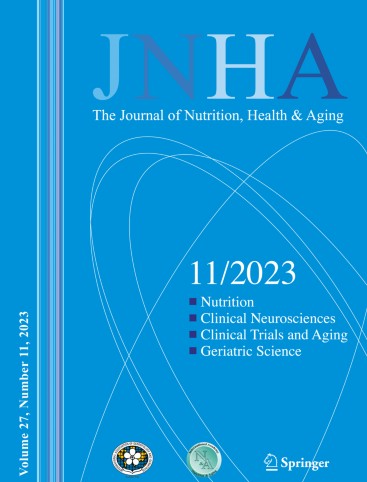Limited association between multimorbidity and high-sensitive C-reactive protein or gait speed in community-dwelling octogenarians – findings from the BUTTERFLY study
IF 4
3区 医学
Q1 GERIATRICS & GERONTOLOGY
引用次数: 0
Abstract
Background
Biological age is a key determinant of disease progression and increased morbidity. However, it is unclear whether multimorbidity is associated with low-grade inflammation or gait speed in octogenarians.
Aim
To examine cross-sectional associations between commonly used comorbidity indices and either elevated high-sensitivity C-reactive protein (hsCRP) or reduced gait speed in community-dwelling non-frail adults aged 80 and older.
Methods
a total of 404 community-dwelling older adults (mean age: 83 ± 3 years) were assessed for multimorbidity, gait speed, and hscrp. five comorbidity indices were calculated: charlson comorbidity index, cumulative illness rating scale for geriatrics, elixhauser comorbidity index (eci), rockwood frailty index, and a weighted modified disease count. binary logistic regression was used to analyze associations with elevated hscrp (>3.0 mg/l) and reduced gait speed (<0.8 m/s).
Results
Of the indices evaluated, only the ECI showed a significant association with elevated hsCRP (adjusted odds ratio [aOR] = 1.18, 95% CI: 1.03–1.35; p = 0.020). When stratified by gender, this association remained significant in men (aOR = 1.29, 95% CI: 1.053–1.59; p = 0.014), but not in women. Furthermore, none of the comorbidity indices were significantly associated with low gait speed.
Conclusion
Among the comorbidity indices assessed, only the ECI demonstrated a modest yet significant association with hsCRP levels in individuals aged 80 years and older. In contrast, no significant associations were observed between any of the comorbidity indices and reduced gait speed in this population. This highlights the importance of comprehensive care, including individualized lifestyle interventions, nutritional support, and timely pharmacological adjustments for effective chronic disease management.
来自BUTTERFLY研究的发现:社区居住的80多岁老人的多病与高敏c反应蛋白或步态速度之间的有限关联
生物学年龄是疾病进展和发病率增加的关键决定因素。然而,尚不清楚多发病是否与八旬老人的低度炎症或步态速度有关。目的探讨80岁及以上社区非体弱成年人常用合病指数与高敏感性c反应蛋白(hsCRP)升高或步态速度减慢之间的横断面关联。方法对404例社区老年人(平均年龄:83±3岁)进行多病、步态速度和hscrp评估。计算五种共病指数:charlson共病指数、老年累积疾病评定量表、elixhauser共病指数(eci)、rockwood衰弱指数和加权修正疾病计数。采用二元logistic回归分析HSCRP升高(3.0 mg/l)和步态速度减慢(0.8 m/s)的相关性。结果在评估的指标中,只有ECI与hsCRP升高有显著相关性(校正优势比[aOR] = 1.18, 95% CI: 1.03-1.35;p = 0.020)。当按性别分层时,这种关联在男性中仍然显著(aOR = 1.29, 95% CI: 1.053-1.59;P = 0.014),但在女性中没有。此外,没有任何合并症指数与低步态速度显著相关。结论在评估的合并症指标中,只有ECI与80岁及以上人群的hsCRP水平有适度但显著的关联。相比之下,在该人群中,没有观察到任何合并症指数与步态速度降低之间的显著关联。这突出了综合护理的重要性,包括个体化生活方式干预、营养支持和及时的药物调整,以实现有效的慢性疾病管理。
本文章由计算机程序翻译,如有差异,请以英文原文为准。
求助全文
约1分钟内获得全文
求助全文
来源期刊
CiteScore
7.80
自引率
3.40%
发文量
136
审稿时长
4-8 weeks
期刊介绍:
There is increasing scientific and clinical interest in the interactions of nutrition and health as part of the aging process. This interest is due to the important role that nutrition plays throughout the life span. This role affects the growth and development of the body during childhood, affects the risk of acute and chronic diseases, the maintenance of physiological processes and the biological process of aging. A major aim of "The Journal of Nutrition, Health & Aging" is to contribute to the improvement of knowledge regarding the relationships between nutrition and the aging process from birth to old age.

 求助内容:
求助内容: 应助结果提醒方式:
应助结果提醒方式:


